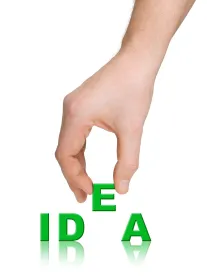Takeaway: The written description requirement is not satisfied by subject matter that is not disclosed but would be obvious over what is disclosed.
In its Decision, the Board granted institution as to claims 1, 2, 4, 6, 7, 15, and 16 of the ’593 Patent, but declined to institute review of claims 3 and 8. The ’593 Patent discloses a vehicle stereo control interface system for use with factory installed local stereo controls and an aftermarket in-dash stereo.
The Board began its analysis with claim construction, construing the terms using the broadest reasonable interpretation in light of the specification. The Board adopted Petitioner’s unchallenged constructions of “adapted to” and “a second format.” The Board also found it necessary to construe “aftermarket.” Petitioner implicitly construed “aftermarket” as “stand-alone” as compared to “built-in.” However, the Board found that this was too narrow and construed “aftermarket” to mean “components that can replace factory-installed components, including original equipment manufacturer (OEM) components that may be considered replacement components for a factory-installed component.”
The Board then discussed whether the ’593 Patent is entitled to the benefit of the November 17, 1998 filing date of Provisional Application No. 30/108,711 or any of the intervening filing dates of the chain of parent patent applications. Petitioner asserted that there is no written description support in the ’593 Patent Specification, the Provisional Application, or in any of the intervening parent applications for the claim 1 limitation reciting “transmit the output signals via hardwire connection to a replacement aftermarket stereo receive.” Patent Owner rebutted Petitioner’s contentions by asserting the Provisional Application reasonably conveys that the inventor Brett D. Riggs possessed the invention claimed in the ’593 Patent as of the filing date of the Provisional Application, and that the ’952 Patent Specification adequately supports the claims of the ’593 Patent. The Board found that for purposes of the Decision, the Provisional Application and intervening parent applications do not provide written description support for the transmit output via hardwire connection limitation recited in claim 1 of the ’593 Patent. The Board was not persuaded that any of the disclosures identified by Patent Owner provided adequate written description support, nor was it persuaded by Patent Owner’s suggestion that because hardwire connections are not complex, the Provisional Application disclosure of both hardwire connections and wireless communications is sufficient detail to demonstrate possession of the transmit output via hardwire connection limitation. The Board found that the written description requirement is not satisfied by “subject matter which is not disclosed but would be obvious over what is expressly disclosed.” The Board also determined not to use its discretion to reject portions of the Petition disputing the benefit of the earlier filing date on Patent Owner’s assertion that the filing date benefit question is nearly identical to the already-considered and rejected question in a prior reexamination because the Board found that the two questions were different.
The Board then reviewed the asserted grounds of unpatentability. The Board began by discussing whether claims 1, 2, 4, 6, 7, 15, and 16 are anticipated by Daly. The Board found that each of the limitations of the claims was disclosed, and was not persuaded by Patent Owner’s sole assertion that Daly is not prior art based on the determination that the ’593 Patent is not entitled to the benefit of an earlier filing date. Regarding claims 3 and 8, the Board found that Petitioner had not sufficiently established that Daly discloses each of the recited limitations because Petitioner provided insufficient explanation to support the assertion of no structural difference imparted by the limitations of claims 3 and 8. Regarding Petitioner’s assertion that the challenged claims are obvious over Daly, the Board found that they were insufficient because they are conclusory and do not provide sufficient articulated reasoning with rational underpinning for modifying the teachings of Daly to “store in memory output signals.”
The Board then reviewed the arguments based on Quigley. Regarding anticipation of claims 1, 2, 4, 6, 7, 15, and 16, the Board found that each of the limitations of the claims was disclosed, and was not persuaded by Patent Owner’s assertion that Daly is not prior art based on the determination that the ’593 Patent is not entitled to the benefit of an earlier filing date. The Board was also not persuaded by Patent Owner’s arguments that the claims are not unpatentable because Quigley’s interface device works with OEM equipment and cannot operate with aftermarket equipment because of its claim construction ruling. For the same reasons as with Daly, the Board found that claims 3 and 8 are not anticipated by Quigley, and the challenged claims are not obvious over Quigley.
The Board then turned to whether the challenged claims are obvious over SoundGate. The Board agreed with Patent Owner that SoundGate does not disclose a memory, and the Petition does not address sufficiently the memory required by claim 1. Regarding Petitioner’s allegations that the challenged claims are obvious over SoundGate and Quigley, the Board found that Petitioner did not provide sufficient articulated reasoning with rational underpinning for modifying the teachings of SoundGate to include a memory as taught by Quigley. Regarding Petitioner’s assertion that the challenged claims are obvious over the remaining combinations, the Board found that those assertions were insufficient because an obvious determination cannot be sustained by mere conclusory statements.
Automotive Data Solutions, Inc. v. AAMP of Florida, Inc., IPR2016-00061
Paper 23: Decision on Institution of Inter Partes Review
Dated: May 13, 2016
Patent 9,165,593 B2
Before: Ken B. Barrett, Kristen L. Droesch, and Trenton A. Ward
Written by: Droesch
Related Proceedings: Ex Parte Reexamination No. 90/012,739



 />i
/>i
